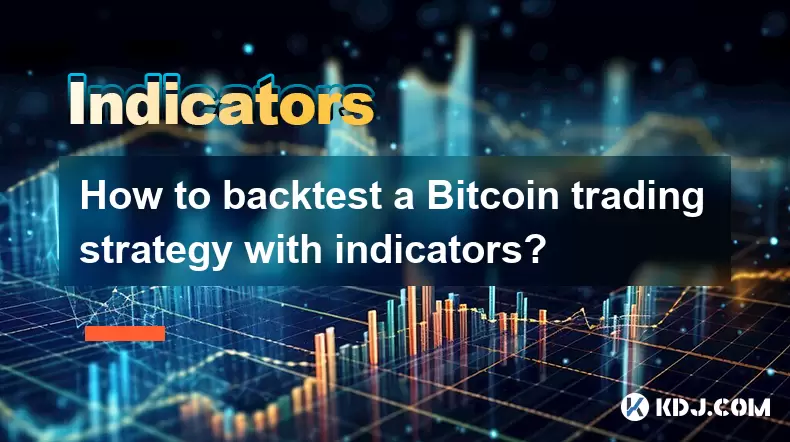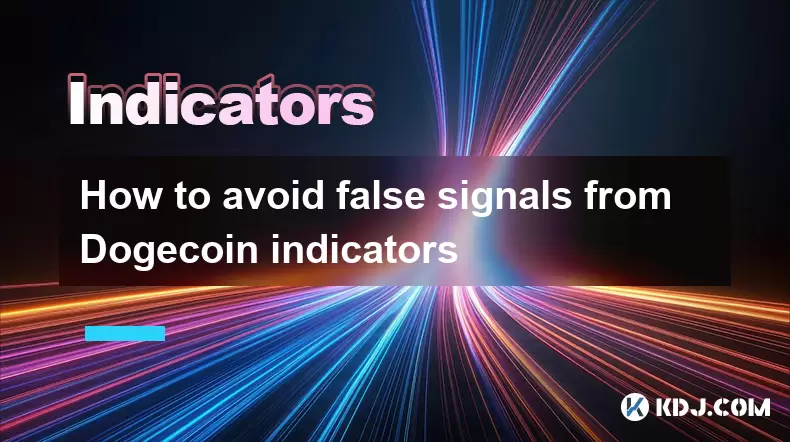-
 Bitcoin
Bitcoin $108,017.2353
-0.81% -
 Ethereum
Ethereum $2,512.4118
-1.58% -
 Tether USDt
Tether USDt $1.0002
-0.03% -
 XRP
XRP $2.2174
-1.03% -
 BNB
BNB $654.8304
-0.79% -
 Solana
Solana $147.9384
-1.76% -
 USDC
USDC $1.0000
-0.01% -
 TRON
TRON $0.2841
-0.76% -
 Dogecoin
Dogecoin $0.1636
-2.09% -
 Cardano
Cardano $0.5726
-1.72% -
 Hyperliquid
Hyperliquid $39.1934
1.09% -
 Sui
Sui $2.9091
-0.59% -
 Bitcoin Cash
Bitcoin Cash $482.1305
0.00% -
 Chainlink
Chainlink $13.1729
-1.54% -
 UNUS SED LEO
UNUS SED LEO $9.0243
-0.18% -
 Avalanche
Avalanche $17.8018
-1.90% -
 Stellar
Stellar $0.2363
-1.69% -
 Toncoin
Toncoin $2.7388
-3.03% -
 Shiba Inu
Shiba Inu $0.0...01141
-1.71% -
 Litecoin
Litecoin $86.3646
-1.98% -
 Hedera
Hedera $0.1546
-0.80% -
 Monero
Monero $311.8554
-1.96% -
 Dai
Dai $1.0000
-0.01% -
 Polkadot
Polkadot $3.3473
-2.69% -
 Ethena USDe
Ethena USDe $1.0001
-0.01% -
 Bitget Token
Bitget Token $4.3982
-1.56% -
 Uniswap
Uniswap $6.9541
-5.35% -
 Aave
Aave $271.7716
0.96% -
 Pepe
Pepe $0.0...09662
-1.44% -
 Pi
Pi $0.4609
-4.93%
How to backtest a Bitcoin trading strategy with indicators?
Backtesting Bitcoin trading strategies using historical data and technical indicators like moving averages and RSI helps traders refine their approach, avoid costly mistakes, and improve decision-making in volatile markets.
Jul 05, 2025 at 07:32 pm

Understanding Backtesting in the Context of Bitcoin Trading
Backtesting a Bitcoin trading strategy involves applying your chosen strategy to historical price data to determine how it would have performed in the past. This process helps traders assess the viability of their strategies before risking real capital. In the world of cryptocurrency, where volatility is high and market conditions can change rapidly, backtesting becomes an essential tool for refining trading logic and improving decision-making.
Bitcoin, as the most traded cryptocurrency, offers ample historical data that traders can use for this purpose. Whether you're using moving averages, RSI, MACD, or any other technical indicator, backtesting allows you to simulate trades based on those signals retroactively.
Selecting the Right Tools and Platforms
To effectively backtest a Bitcoin trading strategy with indicators, you need access to reliable tools and platforms. Some popular choices include:
- TradingView, which offers a robust Pine Script language for coding custom strategies
- Python-based libraries like Backtrader, PyAlgoTrade, or QuantConnect
- MetaTrader 4/5 (with plugins) or specialized crypto platforms like Freqtrade
Each platform has its own syntax and workflow. For example, TradingView's Pine Script is beginner-friendly, while Python-based frameworks offer more flexibility and deeper integration with external APIs and datasets.
When choosing a platform, ensure that it supports:
- Historical Bitcoin price data
- Integration with technical indicators
- Customizable entry and exit rules
- Accurate performance metrics
Setting Up Your Strategy with Technical Indicators
Once you've selected a platform, the next step is to define your trading logic using technical indicators. Let’s take a simple moving average crossover strategy as an example:
- When the 50-day moving average crosses above the 200-day moving average, it generates a buy signal.
- Conversely, when the 50-day moving average crosses below the 200-day moving average, it generates a sell signal.
To implement this in code, especially in Pine Script or Python, you'll need to:
- Define the moving averages
- Set up conditions for long and short entries
- Specify stop-loss and take-profit levels (optional but recommended)
- Record trade entries and exits
For instance, in Pine Script, you might write:
strategy("MA Crossover", overlay=true)
shortMA = ta.sma(close, 50)
longMA = ta.sma(close, 200)plot(shortMA, color=color.blue)
plot(longMA, color=color.red)
if (ta.crossover(shortMA, longMA))
strategy.entry("Buy", strategy.long)
if (ta.crossunder(shortMA, longMA))
strategy.close("Buy")
This script plots the moving averages and executes trades based on crossovers.
Incorporating Additional Indicators for Enhanced Signals
To refine your strategy further, you can add additional filters using other indicators such as RSI, Bollinger Bands, or MACD. These help reduce false signals and improve overall accuracy.
Let’s enhance the previous strategy by adding an RSI filter:
- Only open a long position if RSI(14) is below 30 (indicating oversold conditions).
- Only close the position if RSI(14) is above 70 (indicating overbought conditions).
In Pine Script, you’d modify the conditions like this:
rsiValue = ta.rsi(close, 14)
if (ta.crossover(shortMA, longMA) and rsiValue < 30)
strategy.entry("Buy", strategy.long)
if (ta.crossunder(shortMA, longMA) or rsiValue > 70)
strategy.close("Buy")
By combining multiple indicators, you’re creating a more sophisticated system that may perform better in live markets.
Analyzing Results and Refining the Strategy
After running the backtest, it's crucial to analyze the results thoroughly. Most platforms provide detailed reports including:
- Total number of trades
- Win rate and loss rate
- Profit factor
- Maximum drawdown
- Average profit per trade
You should also visually inspect the chart to see how the strategy behaved during key market events, such as sudden crashes or bull runs. Look for patterns in losing trades—are they clustered during high volatility periods? Are there specific false signals that can be filtered out?
Refinement steps may include:
- Adjusting lookback periods for indicators
- Adding time-based filters (e.g., only trade during certain hours)
- Implementing dynamic stop-loss mechanisms
- Excluding trades during low-volume periods
It's important not to over-optimize, as that can lead to curve fitting. Instead, aim for robustness across different market cycles.
Frequently Asked Questions
Q: Can I backtest strategies on real-time data instead of historical data?
A: Real-time data cannot be used for backtesting because it lacks the context of future prices. Backtesting requires complete historical records to simulate past performance accurately.
Q: How do I get accurate historical Bitcoin price data?
A: Many platforms like Binance, Kraken, or CoinGecko provide downloadable CSV files. APIs from exchanges or services like Yahoo Finance (via CC) also offer programmatic access to historical crypto data.
Q: Is backtesting enough to guarantee profitability in live trading?
A: No, backtesting is just one part of strategy development. Live market conditions, slippage, latency, and emotional factors can all impact real-world performance.
Q: What are some common mistakes to avoid when backtesting?
A: Common pitfalls include overfitting the model to past data, ignoring transaction costs, and failing to account for market impact. Always test on out-of-sample data and keep assumptions realistic.
Disclaimer:info@kdj.com
The information provided is not trading advice. kdj.com does not assume any responsibility for any investments made based on the information provided in this article. Cryptocurrencies are highly volatile and it is highly recommended that you invest with caution after thorough research!
If you believe that the content used on this website infringes your copyright, please contact us immediately (info@kdj.com) and we will delete it promptly.
- Chainlink's Bullish Blueprint: Price Prediction and the Harmonic Pattern
- 2025-07-06 06:30:12
- Ruvi AI: The Audited Token Promising ROI That'll Make Your Head Spin
- 2025-07-06 06:30:12
- Ethereum Bull Run: Double the Potential in 2025?
- 2025-07-06 06:50:13
- Ruvi AI, Token, and Dogecoin: The Next Big Thing in Crypto?
- 2025-07-06 06:35:13
- Ethereum: Stability and Adoption Fueling Mainstream Finance
- 2025-07-06 07:10:12
- Meme Coins: Will They Jump Again? A New Yorker's Take on the Investment Craze
- 2025-07-06 06:50:13
Related knowledge

What is the significance of a Dogecoin engulfing candle pattern
Jul 06,2025 at 06:36am
Understanding the Engulfing Candle Pattern in CryptocurrencyThe engulfing candle pattern is a significant technical analysis tool used by traders to identify potential trend reversals in financial markets, including cryptocurrencies like Dogecoin. This pattern typically consists of two candles: the first one is relatively small and indicates the current...

How to manage risk using ATR on Dogecoin
Jul 06,2025 at 02:35am
Understanding ATR in Cryptocurrency TradingThe Average True Range (ATR) is a technical indicator used to measure market volatility. Originally developed for commodities, it has found widespread use in cryptocurrency trading due to the high volatility inherent in digital assets like Dogecoin (DOGE). The ATR calculates the average range of price movement ...

How to avoid false signals from Dogecoin indicators
Jul 06,2025 at 06:49am
Understanding Dogecoin Indicators and Their LimitationsDogecoin indicators are tools used by traders to analyze price movements and make informed decisions. These include moving averages, Relative Strength Index (RSI), MACD, and volume-based metrics. However, these tools can sometimes generate false signals, especially in highly volatile markets like Do...

Dogecoin Donchian Channels strategy
Jul 06,2025 at 02:43am
What Are Donchian Channels?Donchian Channels are a technical analysis tool used to identify potential breakouts, trends, and volatility in financial markets. They consist of three lines: the upper band, which marks the highest high over a specific period; the lower band, which reflects the lowest low over the same period; and the middle line, typically ...

How to use the TRIX indicator for Dogecoin trading
Jul 06,2025 at 12:29am
Understanding the TRIX Indicator in Cryptocurrency TradingThe TRIX indicator, short for Triple Exponential Average, is a momentum oscillator widely used in technical analysis. It helps traders identify overbought or oversold conditions, potential trend reversals, and momentum shifts in an asset's price movement. While commonly applied to traditional mar...

How to measure buying and selling pressure for Dogecoin
Jul 06,2025 at 01:57am
Understanding the Concept of Buying and Selling PressureBuying pressure refers to a situation where the demand for Dogecoin exceeds its supply, often leading to an upward movement in price. Conversely, selling pressure occurs when more investors are eager to sell their holdings than buy, which typically results in downward price action. These pressures ...

What is the significance of a Dogecoin engulfing candle pattern
Jul 06,2025 at 06:36am
Understanding the Engulfing Candle Pattern in CryptocurrencyThe engulfing candle pattern is a significant technical analysis tool used by traders to identify potential trend reversals in financial markets, including cryptocurrencies like Dogecoin. This pattern typically consists of two candles: the first one is relatively small and indicates the current...

How to manage risk using ATR on Dogecoin
Jul 06,2025 at 02:35am
Understanding ATR in Cryptocurrency TradingThe Average True Range (ATR) is a technical indicator used to measure market volatility. Originally developed for commodities, it has found widespread use in cryptocurrency trading due to the high volatility inherent in digital assets like Dogecoin (DOGE). The ATR calculates the average range of price movement ...

How to avoid false signals from Dogecoin indicators
Jul 06,2025 at 06:49am
Understanding Dogecoin Indicators and Their LimitationsDogecoin indicators are tools used by traders to analyze price movements and make informed decisions. These include moving averages, Relative Strength Index (RSI), MACD, and volume-based metrics. However, these tools can sometimes generate false signals, especially in highly volatile markets like Do...

Dogecoin Donchian Channels strategy
Jul 06,2025 at 02:43am
What Are Donchian Channels?Donchian Channels are a technical analysis tool used to identify potential breakouts, trends, and volatility in financial markets. They consist of three lines: the upper band, which marks the highest high over a specific period; the lower band, which reflects the lowest low over the same period; and the middle line, typically ...

How to use the TRIX indicator for Dogecoin trading
Jul 06,2025 at 12:29am
Understanding the TRIX Indicator in Cryptocurrency TradingThe TRIX indicator, short for Triple Exponential Average, is a momentum oscillator widely used in technical analysis. It helps traders identify overbought or oversold conditions, potential trend reversals, and momentum shifts in an asset's price movement. While commonly applied to traditional mar...

How to measure buying and selling pressure for Dogecoin
Jul 06,2025 at 01:57am
Understanding the Concept of Buying and Selling PressureBuying pressure refers to a situation where the demand for Dogecoin exceeds its supply, often leading to an upward movement in price. Conversely, selling pressure occurs when more investors are eager to sell their holdings than buy, which typically results in downward price action. These pressures ...
See all articles

























































































